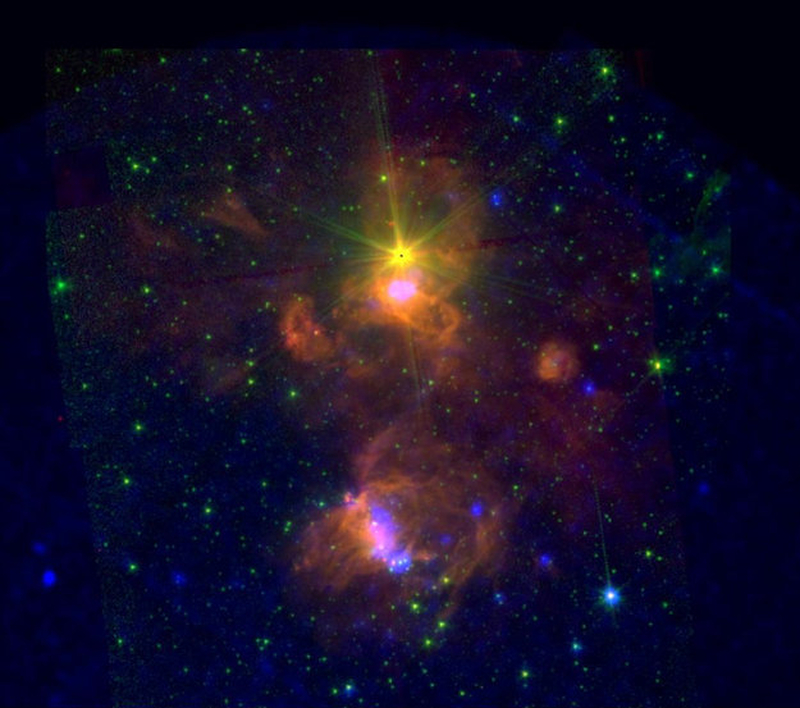
 Credit: L.M. Oskinova, R.A. Gruendl, Spitzer Space Telescope, JPL, NASA & ESA
Credit: L.M. Oskinova, R.A. Gruendl, Spitzer Space Telescope, JPL, NASA & ESA
Peering into the Star Factory
Stars are formed within massive clouds of gas and dust distributed throughout the Milky Way, mostly in the Galaxy's spiral arms. Star formation is a complex process involving gravitational attraction, rotation, magnetic fields, radiation, and turbulent gas motions. Star formation is usually difficult to study since it generally occurs in the most obscured parts of the Galaxy, where gas and dust densities are highest. Astronomers have certain tools to help peer into these regions and to reveal their innermost secrets. Infrared radiation can escape through clouds of small dust grains, so that young stars glowing in the IR can reveal themselves to infrared telescopes. Infrared emission is also produced by warm dust clouds in star forming regions, so that IR observations help reveal the spatial structure of the dust clouds. On the opposite end of the electromagnetic spectrum, high-energy X-rays produced by young stars are capable of penetrating through enormous depths of dust, exposing the high energy processes which occur near buried young stars. The image above is a composite infrared image (from the Spitzer Space Telescope) and an X-ray image (in blue, from the XMM-Newton X-ray observatory) of the star forming region ON2 associated with the complex known as Berkeley 87. These observations help reveal the stars generating high energy X-rays and how these stars interact with the gas and dust structures revealed in the IR.
Published: April 14, 2014
<
HEA Dictionary ● Archive
● Search HEAPOW
● Other Languages
● HEAPOW on Facebook
● Download all Images
● Education ● HEAD
>

Each week the HEASARC
brings you new, exciting and beautiful images from X-ray and Gamma ray
astronomy. Check back each week and be sure to check out the HEAPOW archive!
Last modified Tuesday, 27-Feb-2024 10:10:13 EST


